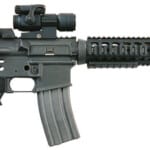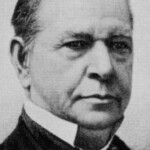
Introducing the Winchester Model 54
The Winchester Model 54 is a bolt-action rifle that played a significant role in the development of firearms during the early 20th century. Manufactured by the renowned Winchester Repeating Arms Company, the Model 54 was introduced as an improved version of its predecessor, the Model 53. This article explores the fascinating history, manufacturing details, and usage of the Winchester Model 54, shedding light on its significance in the realm of firearms.
Development and Manufacture
The Winchester Model 54 was developed in the late 1920s, stemming from the desire to create a high-quality bolt-action rifle that would excel in accuracy, reliability, and durability. The design of the Model 54 was led by renowned Winchester engineer T.C. Johnson. Drawing inspiration from Mauser-type actions, Johnson incorporated several innovative features into the rifle's design.
One of the key design elements of the Model 54 was the three-lug bolt, which ensured smooth operation and enhanced accuracy. The rifle also featured a controlled round feeding system, where the extractor positively controlled the cartridge throughout the feeding process. This design innovation eliminated the potential for jamming and improved overall reliability. The receiver of the Model 54 was machined from solid steel, providing robustness to withstand the pressures generated by various cartridges.
Winchester Repeating Arms Company began production of the Model 54 in 1925 at its factory in New Haven, Connecticut. The initial production was chambered in the .30-06 Springfield cartridge, a popular choice among shooters and hunters at the time. However, the Model 54 was later manufactured in various other calibers, such as .270 Winchester, .257 Roberts, .220 Swift, and more, catering to a wide range of shooting and hunting preferences.
Manufacturing of the Model 54 continued until 1936 when it was eventually replaced by its successor, the Winchester Model 70. During its production run, Winchester manufactured approximately 50,000 to 60,000 Model 54 rifles, making it a relatively scarce firearm compared to some of its contemporaries.
Usage and Applications
The Winchester Model 54 found favor among hunters, competitive shooters, and military personnel due to its exceptional accuracy and reliability. In the civilian market, the rifle was highly regarded for its suitability in big-game hunting, particularly in North America, where its powerful cartridges proved effective against large game species like elk, moose, and bear.
The Model 54 was not widely adopted by military forces, unlike its successor, the Model 70. It is important to note that the British military did not extensively utilize the Model 54 during World War II. Instead, they primarily relied on other rifles, such as the Lee-Enfield series, for their infantry needs.
Cartridges and Performance
The Winchester Model 54 was chambered in a variety of cartridges, offering shooters a wide range of options to suit their specific needs. The initial chambering in .30-06 Springfield showcased the rifle's versatility and effectiveness as a hunting and target-shooting platform. The .30-06 cartridge, known for its excellent long-range performance and ample stopping power, was highly popular at the time and remains so to this day.
Other available chamberings, such as the .270 Winchester, offered improved long-range accuracy with reduced recoil, making it suitable for medium to large game hunting. The .257 Roberts and .220 Swift cartridges were more specialized options, favored by varmint hunters and those seeking higher velocities for small game and predator control.
Predecessors and Contemporary Rifles
The Winchester Model 54 can be considered a direct descendant of the earlier Model 53, which was introduced in 1924. The Model 53 was Winchester's first commercially successful bolt-action rifle, featuring a similar three-lug bolt design. However, the Model 54 surpassed its predecessor in terms of accuracy, feeding reliability, and overall quality.
During the same era, the Winchester Model 54 faced competition from other prominent bolt-action rifles, such as the Remington Model 30, which was based on the military's Springfield 1903 rifle. The Remington Model 30, chambered in .30-06 Springfield, shared similar performance characteristics with the Model 54, appealing to a similar market segment.
Conclusion
The Winchester Model 54 rifle remains an iconic firearm in the history of American firearms manufacturing. With its advanced design, solid construction, and excellent performance, it captured the attention of hunters, shooters, and military personnel alike. Although production numbers were relatively low compared to some of its contemporaries, the Model 54 left a lasting legacy, paving the way for the iconic Winchester Model 70. Today, the Model 54 is highly sought after by collectors and enthusiasts who appreciate its historical significance and outstanding craftsmanship.
If you'd like to join discussion forums on the Winchester Model 54, here are some options:
- The Winchester Arms Collectors Forum - Winchester Model 54 Interest Group
- Winchester Owners Forum - Winchester Model 54
If you know of any forums or sites that should be referenced on this listing, please let us know here.




